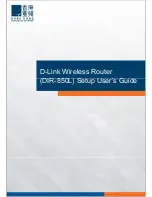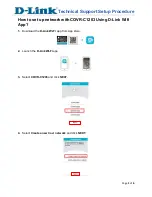
3
With your trim router still upside down on a workbench,
insert shank of cutter into collet. The shank of your
cutter should be close to but not touching the bottom
of the collet. This allows for expansion when the cutter
gets hot.
Tighten the collet nut securely by turning clockwise
with the wrench provided.
WARNING
If collet nut is not tightened securely, cutter may come
out during use, causing serious personal injury.
WARNING
Avoid open area of trim router base. Serious personal
injury will result from contact with a rotating cutter.
TO SET THE DEPTH OF CUT
See fi gure 3
WARNING
Failure to unplug your trim router could result in
accidental starting causing serious injury.
Unplug your trim router.
Loosen the wing bolt and turn the height adjusting
knob until the tip of cutter touches the work surface.
The depth of cut is zero at this point.
Position your trim router so that the cutter can extend
below the sub base for desired depth of cut setting.
Turn the height adjusting knob to obtain the desired
depth of cut. The distance the cutter moves will be
indicated on the depth of cut scale. The cut scale is
dual measure. Each mark indicates a change of 1/16”
per division on one scale and 1mm on the other.
Securely tighten the wing bolt.
OPERATION
WARNING
Always wear safety goggles or safety glasses with side
shields when using your trim router. Failure to do so
could result in dust, shavings, chips, loose particles or
foreign objects being thrown into your eyes resulting in
possible serious injury. If the operation is dusty, also
wear a face or dust mask.
WARNING
When turing your trim router ON, be prepared for
start-up torque. Always have a fi rm grasp of your trim
router before starting. Because of the high cutter speed
rotation your trim router has a tendency to twist, jerk, or
grab in your hands during start-up. If not prepared, this
can cause a loss of control resulting in possible serious
injury.
STRAIGHT FENCE
See fi gure 4
It is helpful to use the straight fence when trimming the
straight edge or engraving a groove.
Tighten the screw to install straight fence. Loosen the wing
nut to adjust the required distance between bit and fence.
Then tighten the wing nut, keep the fence even with the
workpiece edge when cutting and moving the tool.
CIRCUMFERENCE CUTTING
See fi gure 5 - 6
By installing the straight fence and connector you can
make a circumference cut. Available radius cuts, shown
from bit to central hole.
Minimum radius: 70mm
Maximum radius: 220mm
Attention: The straight fence is unable to cut a radius
between 172mm and 186mm.
Correctly align the fence central hole to the required
circle’s center. Pushing a nail, with a diameter no more
than 6mm into the hole, to fi rmly fi x the fence. Move the
tool around the nail in a clockwise direction.
ADJUSTING THE GUIDE
See fi gure 7 - 10
It is much easier to use the adjusting guide for curve
cutting and trimming. Move the guide along the curved
edge.
Tighten the screw to install the adjusting guide on the
tool base plate. Loosen the wing bolt to adjust the guide.
Then tighten the screw fi rmly to fi x the adjusting guide at
a required distance.
Install the guide into the base by bolt A. Adjust the distance
between the bit and base by bolt B, then fasten by bolt C.
When using the tool, please keep the guide mounted on
the workpiece edge.
A bit/cutter guard is attached to protect users from
contacting the bit/cutter when adjusting the fence.
DEPTH OF CUT
See fi gure 11
As previously mentioned, the depth of cut is important
because it affects the rate of feed which, in turn, affects
the quality of a cut (and also, the possibility of damage






























